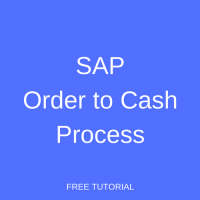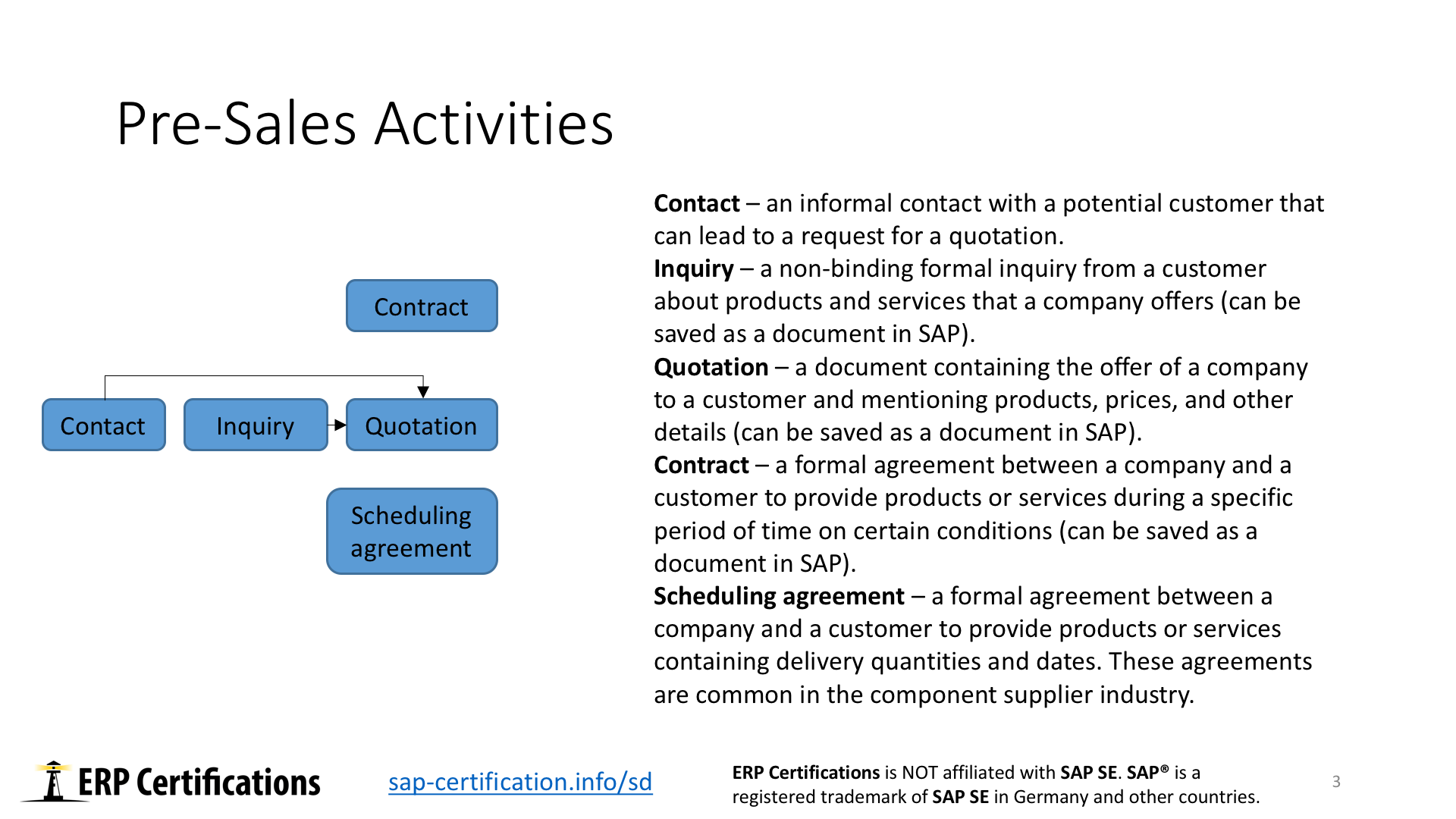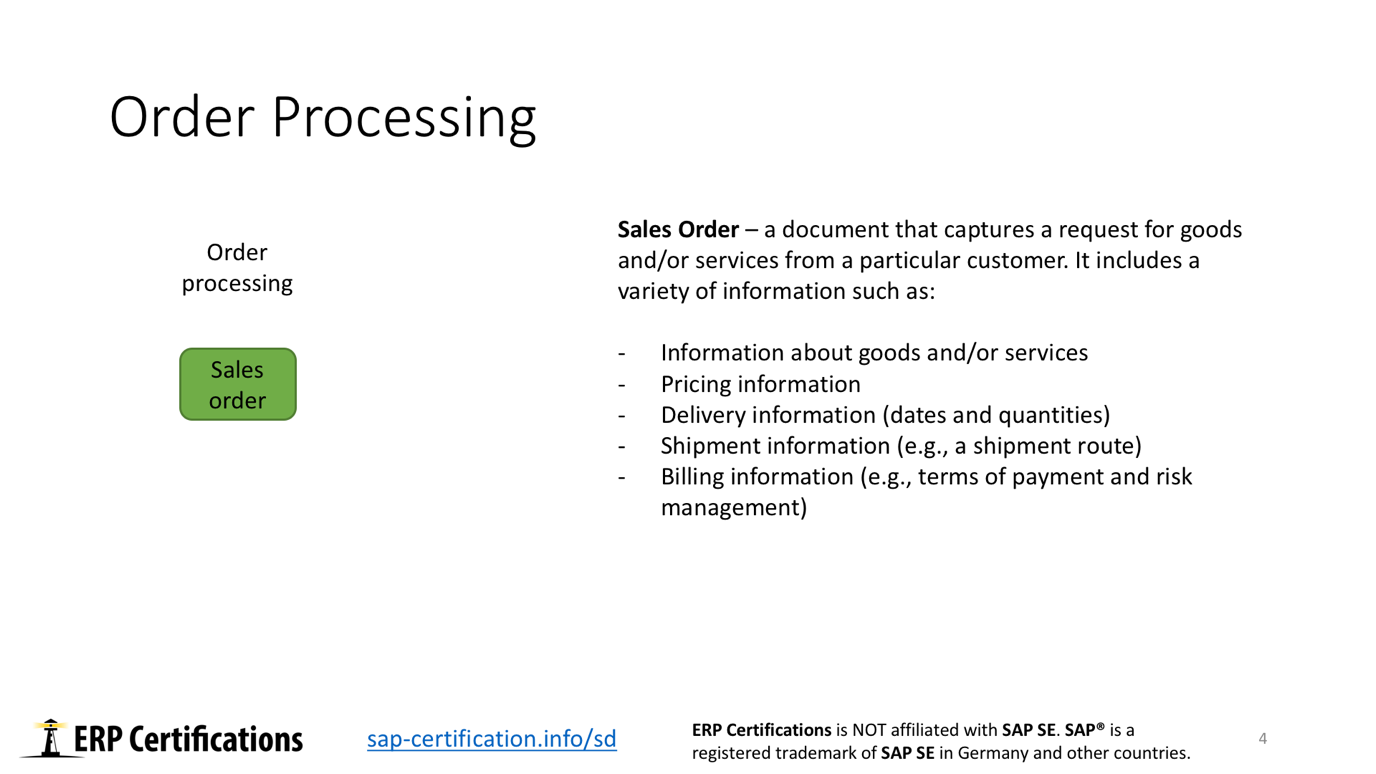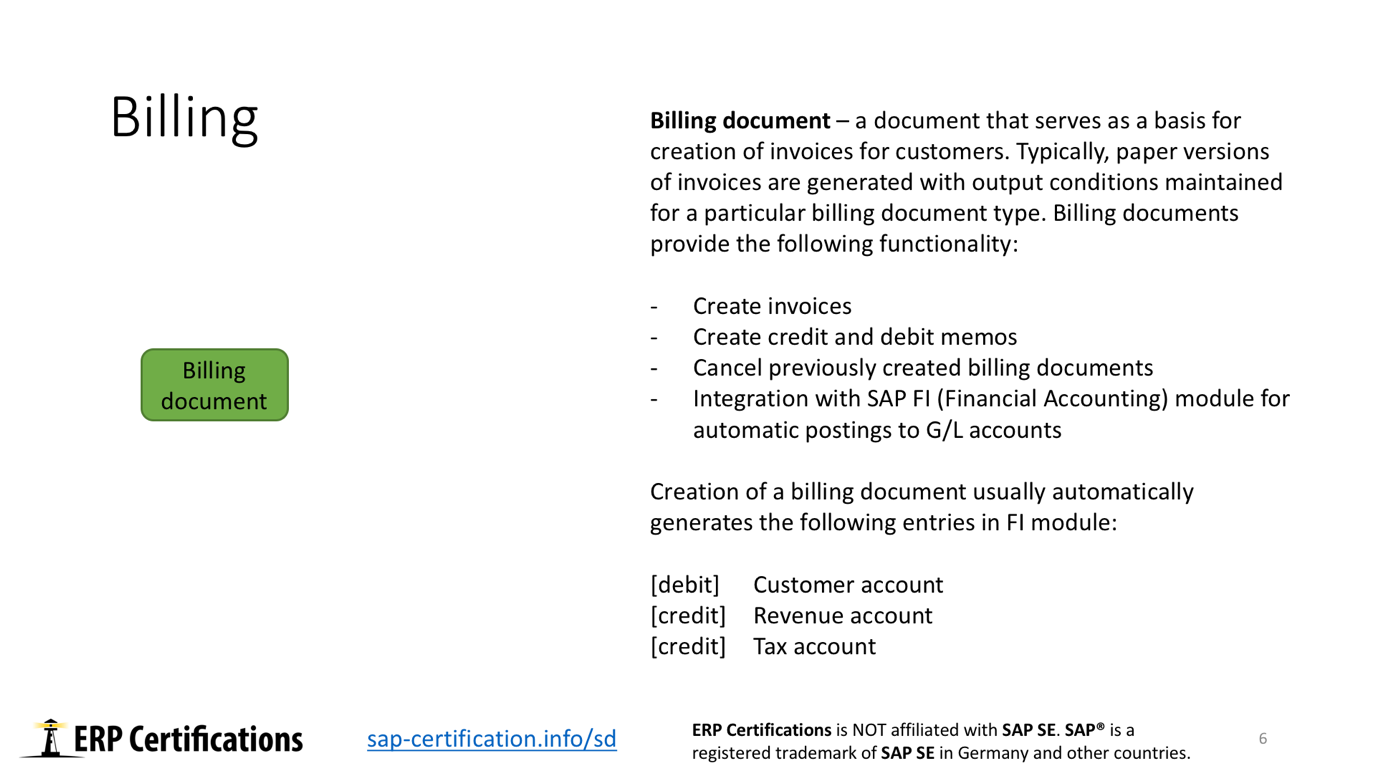 Hello and welcome to the lesson about SAP Order to Cash Process. This lesson is part of the premium SAP SD training course but we included it also to the free SAP SD course as a preview of premium content. This is the first lesson of the module where we are going to study business processes in SAP SD. We will start with an overview of order to cash process business process in SAP. This is one of the most generic sales business processes and it is used by most of the companies in one or another form.
Hello and welcome to the lesson about SAP Order to Cash Process. This lesson is part of the premium SAP SD training course but we included it also to the free SAP SD course as a preview of premium content. This is the first lesson of the module where we are going to study business processes in SAP SD. We will start with an overview of order to cash process business process in SAP. This is one of the most generic sales business processes and it is used by most of the companies in one or another form.
SAP Order to Cash Process Overview
On this slide you can see a graphical overview of SAP order to cash business process where each box indicates a particular document or action in SAP ERP system. There are four main stages of SAP order to cash process: pre-sales activities, order processing, shipping, and billing. Pre-sales activities take place before an actual sale deal has taken place.

Next, order processing stage includes activities for capturing and formalizing requests of customers as well as pricing and delivery conditions. After this stage, the customer has made a commitment to order goods or services from the company and the company can either provide goods from the available stock, order new goods from suppliers or manufacture these goods according to the request of the customer.
As soon as goods are ready to be sent to a customer the shipping stage of SAP order to cash process begins. It involves creation of an outbound delivery document, preparation and packing of goods, planning of transport, and finally dispatch of goods from the warehouse.
Besides sending goods to the customer, it is also necessary to create an invoice, so that the customer knows how much they need to pay to the company. Customer invoices in SAP are created using billing documents. So, the billing stage of SAP order to cash process deals with creating a billing document.
Now, let’s have a more detailed look at each of the steps in SAP order to cash process.
Pre-sales Activities in SAP Order to Cash Process
Pre-sales activities of SAP order to cash process include the following steps and corresponding documents. Note that none of these steps are mandatory and one can even skip all the pre-sales steps and create SAP sales order straight away. However, in many cases these steps are used by companies, and so SAP offers functionality that supports them.

Contact is an informal contact with a potential customer that can lead to a request for a quotation.
Inquiry is a non-binding formal inquiry from a customer about products and services that a company offers (can be saved as a document in SAP).
Quotation – a document containing the offer of a company to a customer and mentioning products, prices, and other details (can be saved as a document in SAP).
Contract – a formal agreement between a company and a customer to provide products or services during a specific period of time on certain conditions (can be saved as a document in SAP).
Scheduling agreement – a formal agreement between a company and a customer to provide products or services containing delivery quantities and dates. These agreements are common in the component supplier industry.
SAP offers a convenient functionality of copying data from pre-sales documents to sales orders. This eliminates the need for entering the same information in SAP ERP system multiple times and speeds up sales processes of a company.
Order Processing Activities in SAP Order to Cash Process
Next, let’s have a look at the order processing state of SAP order to cash process. On this stage, the main focus is on SAP sales order document.

Sales Order – a document that captures a request for goods and/or services from a particular customer. It includes a variety of information such as:
- Information about goods and/or services
- Pricing information
- Delivery information (dates and quantities)
- Shipment information (e.g., a shipment route)
- Billing information (e.g., terms of payment and risk management)
Shipping Activities in SAP Order to Cash Process
When SAP sales order has been finalized and confirmed, it is time to move to the next stage of SAP order to cash process that is related to shipping goods or delivering services to the customer. The main document on this stage is called SAP outbound delivery and it helps to perform various activities related to shipment.

Outbound delivery is a document that enables shipping of goods to a particular customer. It includes information about a number of activities:
- Picking and confirmation (Transfer orders)
- Packing
- Arranging transport and shipment (Shipment document)
- Posting goods issue (Material documents)
Please note that not all of these activities are mandatory. For example, some companies prefer not to capture packing process in SAP ERP but perform it outside of SAP. In these cases, they will not perform packing in outbound deliveries. SAP ERP is a highly customizable system that enables flexible configuration of weather a particular step of business process is optional or mandatory.
Posting goods issue process is integrated with SAP FI (Financial Accounting) module and generates automatic postings on G/L accounts:
[debit] Cost of Goods Sold (COGS) account
[credit] Inventory account
Billing Activities in SAP Order to Cash Process
Finally, the last stage of SAP order to cash process is related to billing the customer. The common practice is that the customer pays after receiving the goods but of course it is also possible to configure SAP to expect a step with an advance payment from the customer before any goods are dispatched.

Billing document is a document that serves as a basis for creation of invoices for customers. Typically, paper versions of invoices are generated with output conditions maintained for a particular billing document type. Billing documents provide the following functionality:
- Create invoices
- Create credit and debit memos
- Cancel previously created billing documents
- Integration with SAP FI (Financial Accounting) module for automatic postings to G/L accounts
Creation of a billing document usually automatically generates the following entries in FI module:
[debit] Customer account
[credit] Revenue account
[credit] Tax account
After creating of a billing document a company we will wait for a payment from the customer. However, the payment transaction is considered to be part of SAP FI (Financial Accounting) module. Therefore, knowledge of how payment is performed and captured in SAP ERP is not required from an SAP SD consultant. However, for your overall development it is useful to know that a payment from the customer will generate a debit posting on the cash account and a credit posting on the customer account.
SAP Order to Cash Process Video
We have also published a video version of this lesson on YouTube. You’re welcome to watch it here.
—
Did you like this tutorial? Have any questions or comments? We would love to hear your feedback in the comments section below. It’d be a big help for us, and hopefully it’s something we can address for you in improvement of our free SAP SD tutorials.
Navigation Links
Go to next lesson: SAP Sales Document Flow
Go to previous lesson: Assignment of Plant to Sales Organization and Distribution Channel
Go to overview of the course: Free SAP SD Training

merci infiniment pour l’explication de ce flux “order to cash” , j’aimerai avoir l’explication d’un autre flux
“SD (processus Need To Contract” qui est également très demandé
Cordiales Salutations
Salya
FANTASTIC
Great information to me as SAP HANA S/4 SD super user, kindly share with me the basic subsquent steps thereafter in FI module. Thanks.
great article!
Very well articulated and explained looking forward to more such article.
What is the relationship between each color legend?
Very good informative information shared. Thanks